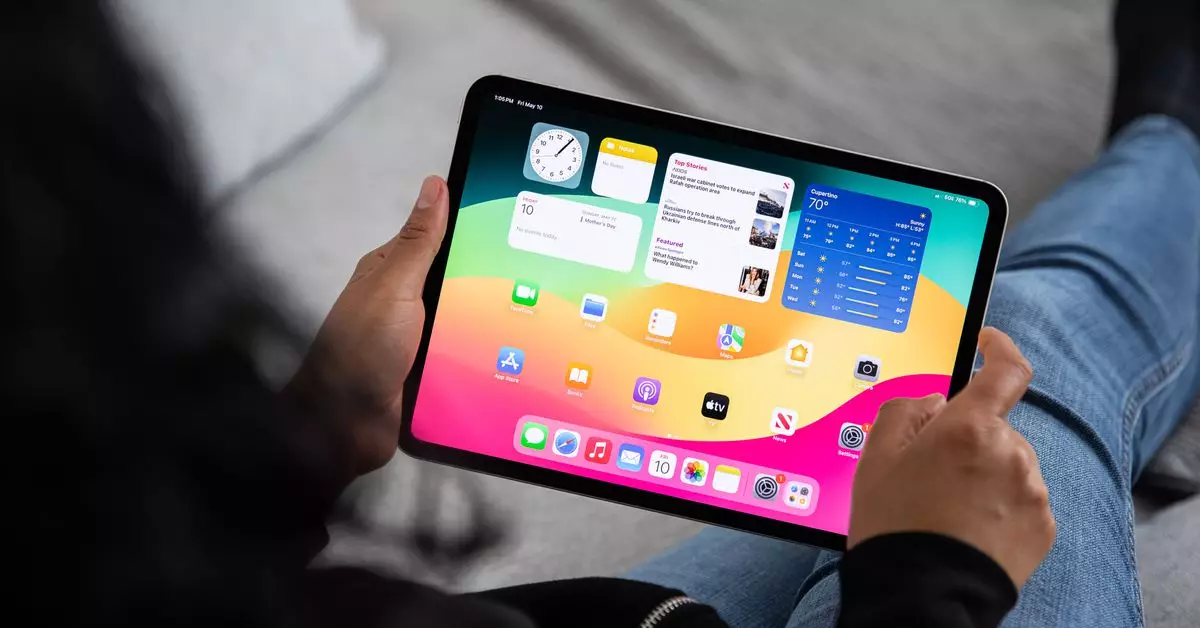As the tech landscape continues to evolve, Apple remains at the forefront, consistently striving to redefine user experience through innovative designs. Recent reports from Bloomberg’s Mark Gurman shed light on the ambitious plans for a foldable 18.8-inch iPad set to debut around 2028. While this announcement generates excitement, it also raises questions about practicality, functionality, and market readiness.
In an era where portability and versatility reign supreme, Apple’s design group has purportedly crafted prototypes that feature a “nearly invisible crease.” Such engineering could represent a significant leap forward in foldable technology, potentially merging the iPad’s capabilities with those of a more extensive display. The envisioned iPad would essentially function as two iPad Pros side by side, enhancing multitasking and productivity for users—an essential factor in today’s mobile-centric world. However, one must consider whether this ambitious design can withstand regular use without compromising durability, which has historically been a concern for foldable devices.
Speculation surrounding a foldable iPad is not novel. The buzz has persisted for years, with various reports suggesting additional models may surface as early as 2026. These forecasts not only showcase Apple’s intention to remain competitive but also reflect the growing consumer demand for devices that marry the functionalities of laptops and tablets. Interestingly, Gurman hints at elements of both the Mac and iPad contributing to this new product, igniting curiosity about the prospect of an operating system that could seamlessly integrate macOS applications within an iPadOS infrastructure by the time of release.
The question of market viability is paramount. As it stands, the 13-inch iPad Pro is priced at $1,299—a price tag that leads one to speculate on the cost implications of a larger, foldable version. For consumers, especially professionals who rely on such technology, the prospect of accessing macOS apps on a foldable iPad could render a higher price point more palatable. It could create a value proposition that balances the heft of the device’s cost with enhanced functionality, thereby broadening its appeal.
Finally, Gurman updates that a foldable iPhone remains on the horizon, although not anticipated until at least 2026. This impending evolution underscores Apple’s commitment to expanding its ecosystem, as a foldable iPad and iPhone could create a more interconnected user experience across devices. As Apple continues to streamline its product lines, the technological advances in display capabilities, such as the anticipated OLED MacBook Pros in 2026, further signal their direction towards a future that emphasizes dimensional flexibility and integration.
The anticipated 18.8-inch foldable iPad encapsulates Apple’s trajectory toward reimagining personal computing devices. While much remains uncertain regarding its long-term durability and market performance, the potential for a hybrid experience that caters to both tablet and laptop users is undeniably enticing. As we move closer to these releases, it will be crucial for Apple to navigate the nuances of consumer expectations, ensuring that innovation does not come at the expense of practicality.

